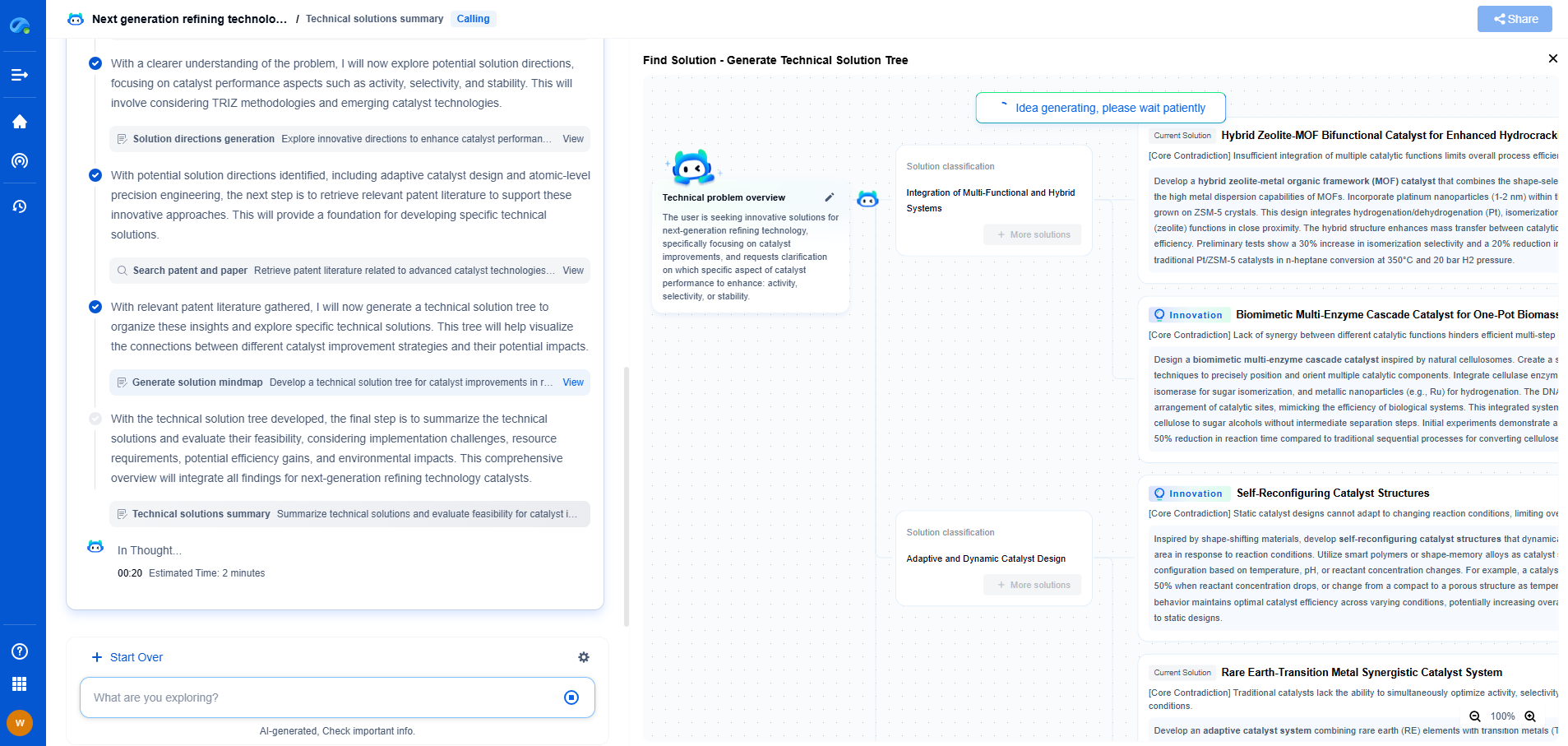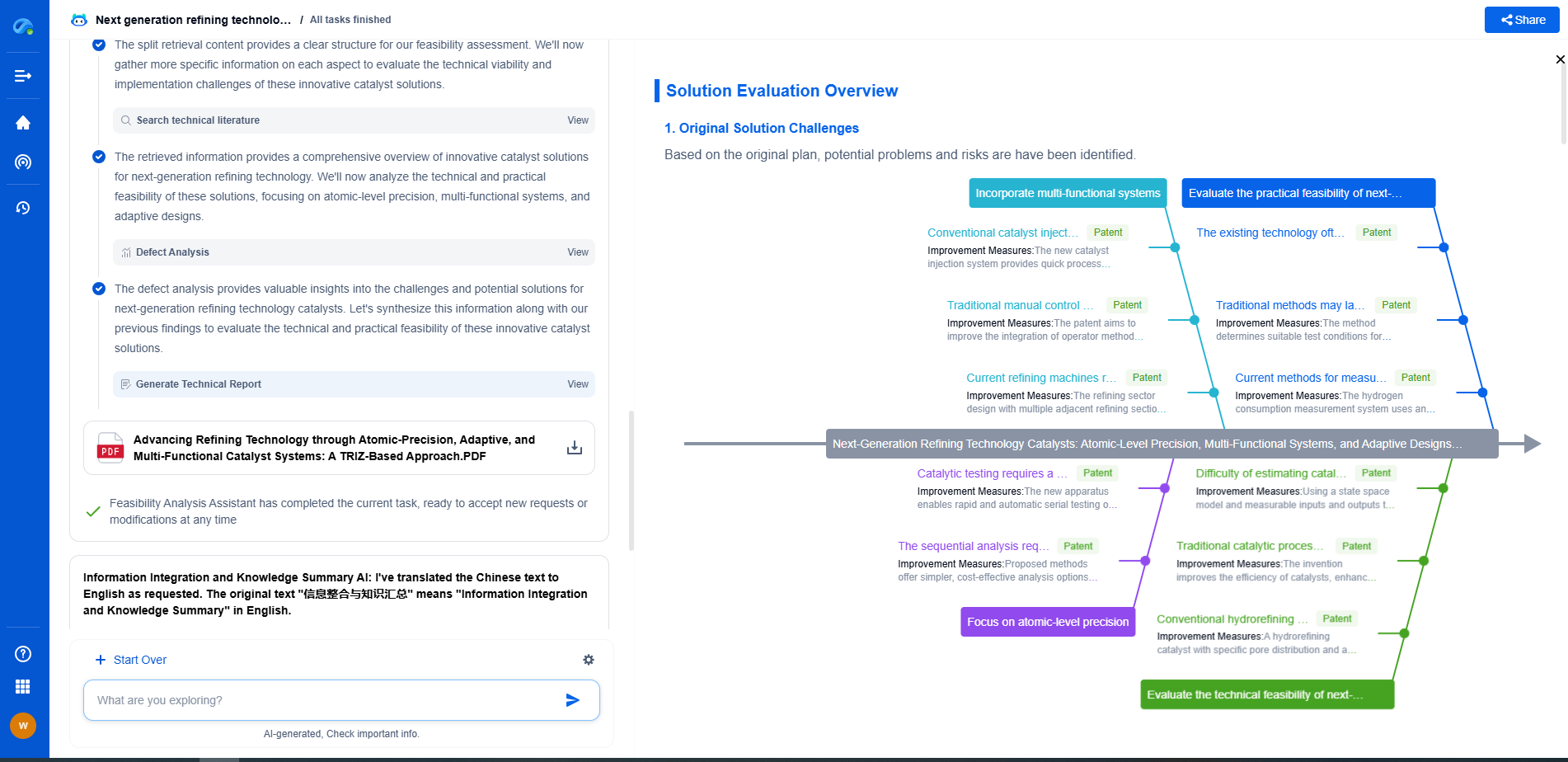Structural-Borne vs. Airborne Noise: What’s the Difference in Mitigation Strategies?
JUL 16, 2025 |
Noise pollution is an increasingly significant concern in various environments, from residential areas to industrial settings. Among the different types of noise, structural-borne and airborne noise are the most prevalent. Understanding the distinction between these two categories is crucial for developing effective mitigation strategies.
Structural-borne noise, also known as structure-borne sound, is transmitted through solid structures such as walls, floors, and ceilings. This type of noise originates from a mechanical excitation, such as footsteps, machinery vibration, or door slams, and travels through a building's structure. In contrast, airborne noise is transmitted through the air and is usually generated by sources like voices, music, or traffic. Airborne noise typically enters a building through openings such as windows, doors, or ventilation systems.
Identifying the Source of Noise: A Critical First Step
Effective noise mitigation begins with identifying whether the noise is structural-borne or airborne. This distinction is essential because each type of noise requires different methods of control. Structural-borne noise can often be identified by its ability to travel long distances through a building's structure and its tendency to manifest as a vibration. On the other hand, airborne noise is usually more localized and can be heard more clearly when there are open pathways for the sound to travel.
Mitigation Strategies for Structural-Borne Noise
Structural-borne noise can be particularly challenging to mitigate due to its ability to travel through solid materials. The following are some strategies to address this type of noise:
1. Vibration Isolation: One of the most effective ways to reduce structural-borne noise is through vibration isolation. This involves using specialized materials or systems to decouple vibrating components from the building structure. Examples include installing rubber mounts or spring isolators under vibrating machinery.
2. Damping: Adding damping materials to structures is another way to reduce structural noise. These materials absorb and dissipate vibrational energy, reducing the amplitude of the sound waves. Common damping materials include viscoelastic compounds and resilient channels.
3. Structural Modification: In some cases, modifying the structure can help reduce noise transmission. This might involve adding mass to walls or floors, installing floating floors, or using double-layered walls with air gaps in between.
Mitigation Strategies for Airborne Noise
Airborne noise mitigation often involves addressing the points of entry and enhancing barriers to sound transmission. Here are some effective strategies:
1. Sealing Gaps and Openings: One of the simplest ways to reduce airborne noise is by sealing gaps and openings where sound can enter. This includes caulking around windows and doors, installing door sweeps, and using weatherstripping.
2. Soundproofing Materials: Installing soundproofing materials such as acoustic panels, curtains, and carpets can significantly reduce airborne noise. These materials absorb sound waves and prevent them from bouncing around a room.
3. Enhanced Insulation: Improving insulation in walls, floors, and ceilings can help block sound transmission. Using high-density materials like mineral wool or fiberglass can improve a building's overall acoustic performance.
Balancing Aesthetic and Functional Needs
While effective noise mitigation is essential, it is also important to balance these efforts with the aesthetic and functional needs of a space. For instance, implementing soundproofing measures should not compromise the visual appeal or usability of a room. Collaborating with architects and acoustic engineers can ensure that noise control measures are both effective and harmonious with the building's design.
Conclusion: A Comprehensive Approach to Noise Mitigation
Addressing noise pollution, whether structural-borne or airborne, requires a comprehensive understanding of the source and characteristics of the noise. By employing targeted strategies for each type of noise, it is possible to create quieter, more comfortable environments. Whether in residential, commercial, or industrial settings, prioritizing noise control can lead to improved well-being and productivity.
In the world of vibration damping, structural health monitoring, and acoustic noise suppression, staying ahead requires more than intuition—it demands constant awareness of material innovations, sensor architectures, and IP trends across mechanical, automotive, aerospace, and building acoustics.
Patsnap Eureka, our intelligent AI assistant built for R&D professionals in high-tech sectors, empowers you with real-time expert-level analysis, technology roadmap exploration, and strategic mapping of core patents—all within a seamless, user-friendly interface.
⚙️ Bring Eureka into your vibration intelligence workflow—and reduce guesswork in your R&D pipeline. Start your free experience today.
- R&D
- Intellectual Property
- Life Sciences
- Materials
- Tech Scout
- Unparalleled Data Quality
- Higher Quality Content
- 60% Fewer Hallucinations
Browse by: Latest US Patents, China's latest patents, Technical Efficacy Thesaurus, Application Domain, Technology Topic, Popular Technical Reports.
© 2025 PatSnap. All rights reserved.Legal|Privacy policy|Modern Slavery Act Transparency Statement|Sitemap|About US| Contact US: help@patsnap.com

